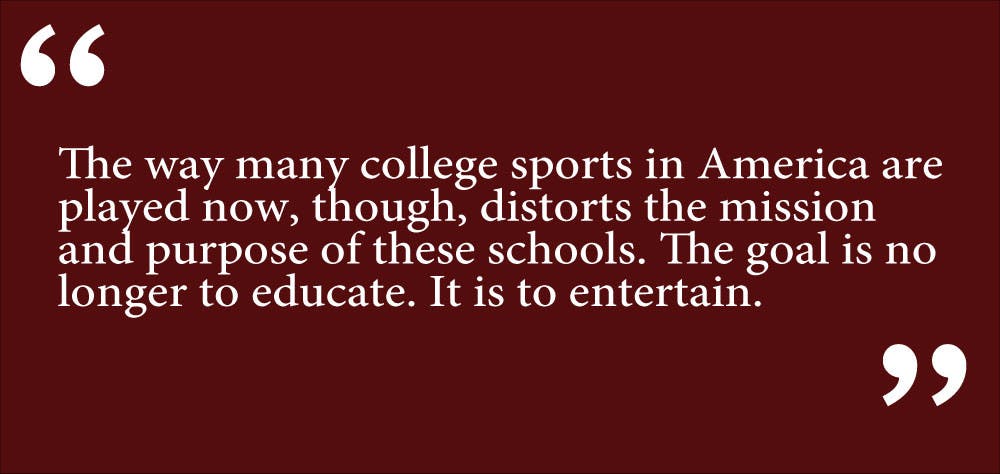Jayson Tatum was born in St. Louis, Missouri in March of 1998. He attended high school at Chaminade College Preperatory School in Creve Coeur, Missouri, where he excelled on the varsity basketball team. A highly touted recruit, he went on to play college basketball at Duke University, one of the most prestigious colleges in the nation. After just one year at Duke, Jayson declared for the NBA draft and was selected third overall by the Boston Celtics. Last Wednesday he played before a sellout crowd in Cleveland on national television. Jayson’s young life and basketball career beg the question: was his year at Duke necessary?
The NBA and the NFL force their future athletes to masquerade as students before entering the draft. In a 2005 collective bargaining agreement, the NBA limited entrance into the league to players over 19 or those who have finished their freshman year of college. To enter the NFL draft, players must be at least three years out of high school. As a result, many of our nation’s best basketball and football players treat college as nothing more than a mandatory stop before they can punch their ticket to the pros. Top college teams serve both as a training ground and a showcase for young athletes, but not as educational institutions. Members of elite college basketball and college football teams are essentially full-time athletes, who have neither the opportunity nor incentive to reach their full academic potential.
The nation’s elite athletes should not be developing their skills in college. The United States needs a more robust framework of semi-professional sports leagues for young athletes who intend on entering the NBA or NFL to develop and showcase their skills.
Do I want to abolish college sports? No. Athletics contribute enormously to school spirit and pride. By teaching physical fitness, discipline and teamwork, competitive athletics complement academic course work to provide a well-rounded education. The way many college sports in America are played now, though, distorts the mission and purpose of these schools. The goal is no longer to educate. It is to entertain.
Semi-professional development leagues would give athletes the chance to focus on their craft and showcase their abilities with more freedom without worrying about staying eligible for NCAA competition. They also would not have to hide behind the veil of amateurism that the NCAA has set forth. They could receive a fair market wage for their labor, which college athletes do not.
Baseball and hockey already have unaffiliated minor leagues that serve as intermediate steps for players leaving high school seeking the chance to play at the next level. These leagues range from amateur to professional all around the country. As a result, the college experience for student athletes in these sports is much more legitimate because the players in college have made the choice to be there.
In the famous words of former Ohio State quarterback, Cardale Jones, “We come here to play football, we ain’t come here to play school.” Why make the most promising young athletes “play school” past high school? The country’s top basketball and football players should not be forced to go to college. Rather, they should be able to enter a development league where they can get paid and showcase their skills to the major professional leagues. College athletics and intercollegiate games would still exist, but top prospects would not be forced to attend for just one year when they have no intention of earning a degree.
Charlie Blasberg ’18 can be reached at charles_blasberg@brown.edu. Please send responses to this opinion to letters@browndailyherald.com and other op-eds to opinions@browndailyherald.com.





